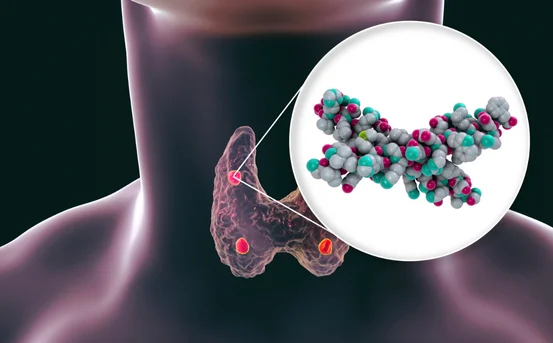The Arteriovenous Malformation (AVM) is a rare, but serious vascular disorder that results in an inadvertent connection between veins and arteries that bypass the capillary system. The tangle of blood vessels can be found anywhere in the body, however AVMs in the brain and spinal region can be among the most serious due to the possibility that they could cause serious neurological damage.
A timely and precise assessment of AVM is essential for planning an effective and safe AVM surgery. The correct diagnosis for arteriovenous malformation surgery is crucial, as incorrect diagnosis or delay in detection could cause life-threatening complications, such as stroke, hemorrhage or even long-term disability.
Why Diagnosis is Critical for Arteriovenous Malformation Surgery
- Prevents Life-Threatening Complications :- AVMs are often not noticed until they rupture, which can lead to bleeding in the brain or neurological disorder. A prompt and accurate AVM diagnosis can help prevent acute complications, allowing physicians to determine preventive procedures or neurosurgery prior to the damage is caused.
- Ensures Appropriate Treatment Planning :- Correct identification of an AVM provides the necessary information for surgical planning, ensuring that the diagnosis for arteriovenous malformation surgery is made with precision, leading to improved outcomes.
- Guides Surgical Planning :- Every AVM is distinctive in terms of dimensions, location, and its complexity. A thorough diagnosis aids in identifying the structure of the AVM and determining if the patient is a candidate to undergo surgery, embolization and stereotactic radiosurgery. The most advanced AVM imaging techniques offer 3D information that is crucial when performing AVM Resection surgery.
- Assesses Risk Factors :- The diagnosis plays an important role when evaluating risk-related factors, such as the risk of the AVM to be bleed-prone and its relationship to brain functional regions as well as the general condition of the person. This aids in determining whether surgery is the best alternative or if alternative therapies are more secure.
Symptoms That Lead to AVM Diagnosis
Although there are instances where AVMs are found in the course of a routine examination the majority of patients seek medical attention for:
- Extreme headaches
- Seizures
- Numbness or weakness
- Problems with vision
- Speech difficulties
- Unexpected confusion or memory loss
- The symptoms of stroke are similar to those seen in strokes.
These symptoms can be a trigger for an additional neurological exam and AVM screening with various diagnostic tools.
Key Diagnostic Methods for Arteriovenous Malformation
An AVM diagnosis AVM is usually made with one or one or studies:
- MRI (Magnetic Resonance Imaging) :- MRI to aid in AVM detection is among the most efficient and non-invasive methods of observing spinal and brain disorders. MRI can help determine the size, position, and the condition of the surrounding tissue around the AVM. It is especially useful to assess the condition of non-ruptured AVMs and the surrounding brain structures.
- CT Scan (Computed Tomography) :- A CT scan, particularly CT angiogram, is typically the first test to be performed when the presence of an AVM rupture has been suspected. It may reveal swelling, bleeding or lesions within the brain. CT scans are speedy and can be useful in times of emergency, however they provide less information than MRI.
- Cerebral Angiography (Digital Subtraction Angiography – DSA) :- This is the gold standard for AVM diagnosis. Cerebral angiography offers the highest resolution image of blood vessels, by injecting an contrast dye into arteries. It enables live imaging of how blood moves through the AVM which reveals the feeder arteries as well as draining veins. This test is vital to plan a surgical procedure.
- Magnetic Resonance Angiography (MRA) :- MRA is a variation of MRI that concentrates the blood vessels. It’s a non-invasive procedure that can detect vascular irregularities without Ionizing radiation. It is a safe alternative for those who are not able to undergo a procedure called cerebral angiography.
- Electroencephalogram (EEG) and Neurological Exams :- In the case of seizures being the main sign, EEG and comprehensive neurological tests are carried out in conjunction with imaging studies to discover the degree the involvement of the brain.
Advanced Imaging for Surgical Candidates
If you are a patient who is considered to undergo AVM Neurosurgery, sophisticated instruments for diagnosis may be employed:
- 3D Rotational Angiography for precise surgical mapping
- Functional MRI (fMRI) to track brain regions in the vicinity that are involved in motor or speech function
- Diffusion Tensor Imaging (DTI) to identify white matter tracts in the vicinity of the AVM
These devices are essential in reducing the risks of post-surgical surgery and maintaining the function of the brain.
Challenges in AVM Diagnosis
Despite advancements in technology, AVMs can be challenging to identify because of:
- Asymptomatic manifestation: Many AVMs are not symptomatic until they rupture.
- The mimicking of different conditions AVMs may resemble cysts, tumors or even cancers
- Deep or hidden AVMs There are some AVMs are located deep within the brain, making them difficult to spot with routine scans
This is the reason why having a multidisciplinary strategy that involves radiologists, neurologists, and neurosurgeons is crucial to ensure exact AVM diagnostics and plan.
Conclusion
When it comes to managing Arteriovenous Malformation the diagnosis not just the initial step; it is the basis for the safe and effective treatment. With the aid of modern imaging techniques such as MRI, CT scan, and cerebral angiography, doctors are able to identify AVMs with precision and design individualized surgical plans to reduce the risks.
You or someone else you know is suffering from symptoms that include headaches, seizures that aren’t explained or neurological issues get a medical examination immediately. A prompt AVM diagnosis could save lives and provide successful treatment options such as AVM surgical procedure, embolization or radiosurgery.























